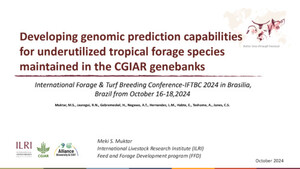
Identification of production challenges and benefits using value chain mapping of egg food systems in Nairobi, Kenya
Abstract
Commercial layer and indigenous chicken farming in Nairobi and associated activities in the egg value chains are a source of livelihood for urban families. A value chain mapping framework was used to describe types of inputs and outputs from chicken farms, challenges faced by producers and their disease control strategies. Commercial layer farms were defined as farms keeping exotic breeds of chicken, whereas indigenous chicken farms kept different cross breeds of indigenous chicken. Four focus group discussions were held with producers of these chickens in peri-urban area: Dagoretti, and one informal settlement: Kibera. Qualitative data were collected on interactions between farmers, sources of farm inputs and buyers of poultry products, simple ranking of production challenges, farmers' perception on diseases affecting chicken and strategies for management of sick chicken and waste products. Value chain profiles were drawn showing sources of inputs and channels for distribution of chicken products. Production challenges and chicken disease management strategies were presented as qualitative summaries. Commercial layer farms in Dagoretti kept an average of 250 chickens (range 50–500); while flock sizes in Kibera were 12 chickens (range 5–20). Farms keeping indigenous chicken had an average of 23 chickens (range 8–40) in Dagoretti, and 10 chickens (range 5–16) in Kibera. Commercial layer farms in Dagoretti obtained chicks from distributors of commercial hatcheries, but farms in Kibera obtained chicks from hawkers who in turn sourced them from distributors of commercial hatcheries. Indigenous chicken farms from Dagoretti relied on natural hatching of fertilised eggs, but indigenous chicken farms in Kibera obtained chicks from their social connection with communities living in rural areas. Outlets for eggs from commercial layer farms included local shops, brokers, restaurants and hawkers, while eggs from indigenous chicken farms were sold to neighbours and restaurants. Sieved chicken manure from Dagoretti area was fed to dairy cattle; whereas non-sieved manure was used as fertilizer on crops. Production challenges included poor feed quality, lack of space for expansion, insecurity, occurrence of diseases and lack of sources of information on chicken management. In Kibera, sick and dead chickens were slaughtered and consumed by households; this practice was not reported in Dagoretti. The chicken layer systems contribute to food security of urban households, yet they have vulnerabilities and deficiencies with regard to disease management and food safety that need to be addressed with support on research and extension.
Citation
Onono, J.O., Alarcon, P., Karani, M., Muinde, P., Akoko, J.M., Carron, M., Fèvre, E.M., Häsler, B. and Rushton, J. 2018. Identification of production challenges and benefits using value chain mapping of egg food systems in Nairobi, Kenya. Agricultural Systems 159: 1–8.









